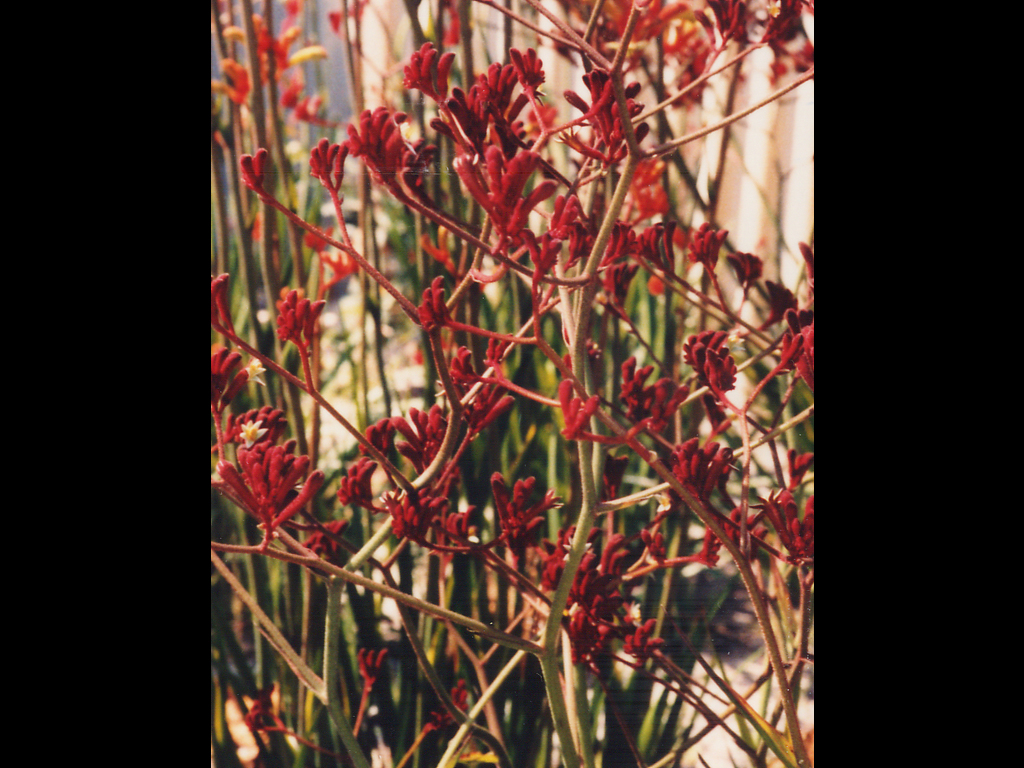Anigozanthos 'Velvet Harmony'
- File Number
- 305
- ACRA Field Book Number
- 23
- Registration Date
- 20/10/1988
- Application Received
- 01/10/1983
- Family
- Haemodoraceae
- Cultivar Name
- Anigozanthos 'Velvet Harmony'
- Origin
- Anigozanthos 'Velvet Harmony' is the result of a manipulated cross between A. rufus and A. flavidus. The cross was performed by the late Mr S Haynes of Western Australia in 1972. The cultivar was first received by the Authority in October 1983. Registration applied for by K R Oliver of Western Australia.
- Characteristics
- This cultivar has stems to ca. 1.1m tall with scattered plumose green and dark purple hairs becoming more dense on the terminal branchlets. The flowers are in a terminal branched raceme on pedicels to ca. 5mm long. They are covered with plumose wool, predominatly dark purple, which covers the whole inflorescence. The perianth tube is ca. 25-27mm long, minutely scabrous inside, the hairs becoming less branched, and only a few with stellate tips towards the base. The perianth lobes are ca. 8mm long with yellow green plumose hairs inside. The anthers are linear and about the same lenght as the filaments, the connective tipped with a small gland-like appendage. There are three to five ovules per locule. The flowers are produced from October to December. Diagnosis: There are two other cultivars that arise from the same hybrid cross, Anigozanthos 'Unity' and Anigozanthos'Red Cross'. Anigozanthos 'Red Cross' can be readily distinguished by the yellow patch at the base of the flower, the slightly larger flower size and slightly taller stature. Anigozanthos'Unity' has flowers with perianth tubes to 40mm long and is also slightly taller. Anigozanthos 'Velvet Harmony' is a much darker colour than the other two hybrids due to its thicker covering of plumose hairs.
- Cultivation
- Anigozanthos 'Velvet Harmony' has been in cultivation since 1972. It has proved to be less edible to snails than many hybrids and is one of those less susceptible to Ink Disease. Frost hardiness has not been fully tested but it is moderately drought resistant. Vegetative propagation must be used to ensure the cultivar's features are retained.
- Publication
- Wrigley, J.W. & Fagg, M. (1988), Australian Native Plants: propagation, cultivation and use in landscaping Edn. 3: 110
- Colour Coding
- RHS Colour Chart 1966hairs on perianth: red purple group 59Ainside of perianth: greyed green group 194Afilaments: yellow group 145Aanthers: greyed orange group 167A
- Propagation
- Division or tissue culture
- Applicant Name
- K R Oliver
- Uses
- As part of a mass planting or mixed in a shrubbery, or as a spectacular feature plant. Attracts nectar feeding birds.
- Availability
- Unknown
- ANBG Accession Numbers
- Accession Number 305.
- NSL ID
- -

